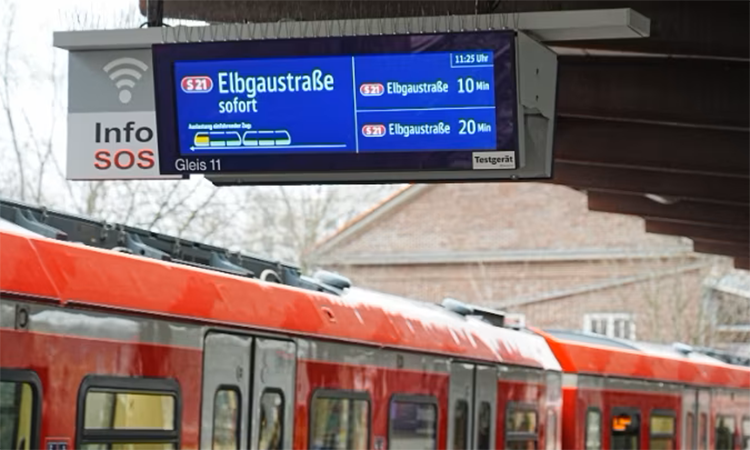Q&A with DB’s Robert Biene: New real-time occupancy display systems
Posted: 15 February 2023 | Global Railway Review | No comments yet
Robert Biene, Senior Manager for the Digital Strategy of Deutsche Bahn AG (DB) and Lead Architect for passenger information, talks to Global Railway Review about the benefits and success so far of the new real-time occupancy display systems that DB are rolling out in Germany.


Credit: DB AG
What can you tell us about the new real-time occupancy display systems that DB are introducing?
The occupancy displays offer a comprehensive crowd management system, with benefits for passenger satisfaction, the capacity of the rail network and operational excellence.
By collecting the train occupancy per wagon in real-time, the system allows dispatchers to manage the flow of train traffic based on real-time information of the passenger flow and allows customers to find a seat more quickly, ultimately making rail operations more efficient. If passengers selectively board wagons that are less occupied, DB can reduce the time needed for the exit and entry of passengers at regularly scheduled stops. This in turn enables better use of the capacities in the rail network.
How do the display systems work?
The occupancy display on the platform is done in three-stage traffic light logic or in person pictograms for the respective carriages. Through this, passengers can see where they can position themselves in order to find a carriage with free capacity. Gradually, the data will be displayed inside the trains themselves, and will also be incorporated into the DB apps DB Streckenagenten and DB Navigator, as well as the apps of the respective transport associations.
The occupancy system itself is based on real-time information of the passenger load. Therefore, DB uses different technologies such as automatic passenger counting systems (APC) or Wi-Fi analytics. In addition, DB is using an in-house developed innovative light-sensor technology (Lightgate), which is installed next to the track. The advantage of this is that no technology needs to be integrated inside the trains.


An example of the new display boards. The board shows in red, yellow and green how full the individual cars are. Credit: DB AG
How will these display systems benefit passengers?
By showing the occupancy levels in our trains and on the displays on the track, DB generates a higher level of passenger satisfaction and quality level of operations by guiding passengers to less crowded wagons. Furthermore, numerous studies have shown that the occupancy information via app helps over 10% of travellers to choose less crowded trains for their journey. This should be followed by a shift in demand from peak to off-peak times of a similar magnitude.
Can you talk about the rollout of these systems?
So far, the rollout is going according to plan. The S-Bahn (local railway) in Stuttgart and Hamburg went into operation with the first systems in January 2023, and they are being successively expanded. The first regional service, a service between Hamburg and Lübeck, began in February 2023 with real-time occupancy information inside the trains. Furthermore, the S-Bahn in the Rhine-Main region will start with occupancy information within the next month, followed by parts of the Berlin S-Bahn. In addition, by the end of 2024, more than 1,500 DB Regio wagons across Germany, a quarter of all DB trains in regional transport, will be able to generate real-time passenger load information.
What has been the response to the new systems so far? Are they meeting passenger expectations/improving journeys?
Within the first weeks of running the new system, we have received lots of positive customer feedback, especially from passengers with reduced mobility. In addition to the positive customer feedback, we have also received requests to accelerate the roll-out of the system and to use the data for energy management and simulations for crowd-based dispatching of trains. So far, the new system has been a remarkable success for Deutsche Bahn and generates impact for the digitalisation of the railway sector in Germany.


Robert Biene is a Senior Manager for the Digital Strategy of Deutsche Bahn AG (DB) and Lead Architect for passenger information. He is responsible for the crowd management programme within DB and Co-Lead of the sector initiative for public transport occupancy data (BRAIN). Prior to joining the railway industry, Robert worked as manager for digital transformation with Artificial Intelligence.
Related topics
Big Data, Digitalisation, Passenger Experience/Satisfaction, Passenger Information Systems (PIS), Passengers With Reduced Mobility (PRM), Real-Time Passenger Information (RTPI), Station Developments, Technology & Software








